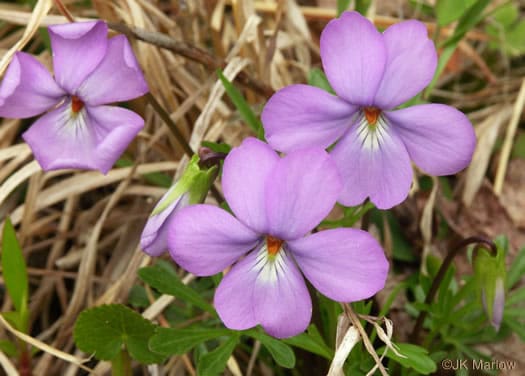Violaceae
bird's foot violet
Viola pedata
Plant Type
Herbaceous Wildflower
Life Cycle
Perennial
Typical Size
0.25-0.75 ft. tall
0.25-0.75 ft. wide
Tolerant of
Drought
Inolerant of
Poorly Drained Soil
Propagation
By seed, By division
Plant Propagation Notes
Seeds need a cold moist stratification of 10 days. Rootstock cuttings require well-developed buds and roots.
Plants/Diseases
No significant disease or pest issues.
Wildlife Benefits
Nectar/pollen source for pollinating insects, Host plant for butterfly larvae
Leaves
Basal leaves only. Orbicular or palmatifid with deeply cut lobes.
Flowers
Lavender to purple. Sometimes bicolor with five petals.
Fruit
Capsule.
Toxicity
No known toxicity.

USDA Hardiness Zones
4, 5, 6, 7, 8
Light Exposure
Full Sun, Part Sun/Shade
Soil Moisture
Dry, Medium
Soil Drainage
Well-drained
Soil pH
Acidic (less than 6.0), Neutral (6.0-8.0)
Native in South Carolina?
Yes
Plant Native Habitat
Forests, woodlands, roadbanks, and glades with dry rocky or sandy soil.
Global Conservation Status (NatureServe)
Secure (G5)
Federal Conservation Status (USFWS)
Not Listed
Distribution Notes
Uncommon in the coastal plain. Common in the sandhills, piedmont, and mountains.
Subspecies
Viola pedata ssp. cuneatiloba
Viola pedata ssp. pedata
Viola pedata var. flabellata



